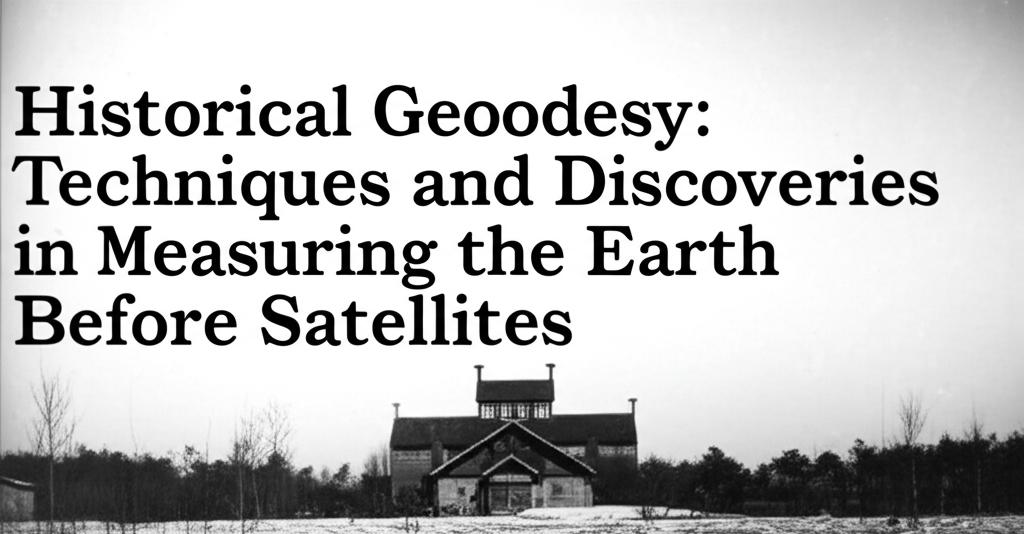Before the advent of satellites, measuring the Earth was a monumental task that relied on ingenious techniques and painstaking observations. Ancient Greek scholars were among the first to theorize and calculate the Earth's spherical nature. Eratosthenes of Cyrene, in the 3rd century BCE, famously estimated the Earth's circumference with remarkable accuracy by observing the sun's angles at two different locations in Egypt – Syene (now Aswan) and Alexandria. He noted that on the summer solstice, the sun was directly overhead in Syene, casting no shadow, while in Alexandria, a vertical stick cast a shadow. By measuring this shadow angle and knowing the distance between the two cities, he used simple geometry to calculate the Earth's circumference. His estimate, depending on the precise length of the "stadion" unit he used, was remarkably close to the currently accepted value. Other Greek philosophers like Plato and Archimedes also proposed figures for the Earth's circumference, though with less accuracy than Eratosthenes. Posidonius, another Greek philosopher, later used observations of the star Canopus to estimate the Earth's circumference.
For centuries, these foundational ideas were built upon. The development of geometry by Thales of Miletus and the geocentric world system and coordinate catalogue by Claudius Ptolemy were significant contributions.
A major leap in geodetic techniques came with the introduction of triangulation in the 16th and 17th centuries. This method involves measuring the angles of a triangle formed by three points, where the length of one side (the baseline) is known. Using trigonometry, the lengths of the other sides can be calculated. By creating a chain of interlocking triangles, surveyors could accurately measure vast distances and map large areas. Willebrord Snell, in 1615, systematically used triangulation networks to measure the distance between Alkmaar and Breda. These networks became the basis for many national surveys, covering large parts of Europe, the United States, and India by the end of the 19th century. The first geodetic survey of note using triangulation was conducted in France by Jean Picard in the late 17th century, later continued by the Cassini family.
Another technique used alongside triangulation was trilateration, where the lengths of the sides of a triangle are measured directly, often using electronic distance measurement (EDM) instruments as technology progressed in the 20th century. Traverse surveying, similar to dead reckoning navigation, involved measuring angles and distances between a series of connected points to determine their positions.
Determining the precise shape of the Earth was another significant endeavor. Isaac Newton, in the 17th century, theorized that the Earth's rotation should cause it to be an oblate spheroid – flattened at the poles and bulging at the equator. To verify this, the French Academy of Sciences sponsored two pivotal expeditions in the 18th century: one to Peru (near the equator) led by scientists like Pierre Bouguer and Charles Marie de La Condamine, and another to Lapland (near the North Pole) led by Pierre Louis Maupertuis. By measuring the length of a degree of latitude at these different locations, they confirmed Newton's hypothesis. The Earth was indeed an oblate spheroid. These expeditions provided crucial data for creating more accurate reference ellipsoids, which are mathematical models of the Earth's shape.
Other important techniques and instruments in historical geodesy included:
- Astronomical observations: Measuring the angles between the plumb line (direction of gravity) at a point and celestial bodies like stars helped determine latitude and longitude. These were crucial for establishing control points for surveys.
- Levelling: This technique was used to measure differences in height between points, establishing vertical control and understanding land subsidence or uplift. Precise levelling networks were developed, taking into account factors like atmospheric refraction.
- Gravity measurements: As early as 1902 in Canada, precise gravity measurements were made using instruments like the Mendenhall pendulum apparatus. Understanding variations in Earth's gravity field helped refine the concept of the geoid – the equipotential surface of the Earth's gravity field, which approximates mean sea level.
- Theodolites: These instruments were essential for accurately measuring horizontal and vertical angles in triangulation and traverse surveys. The development of theodolites with micrometer circles and, later, optical-based instruments like the Wild T4, significantly improved precision.
- Electronic Distance Measurement (EDM): The invention of instruments like the Geodimeter in the mid-20th century, which used light waves to measure distances, revolutionized baseline measurements for triangulation and enabled more extensive use of trilateration. This dramatically reduced the time and labor required for such measurements.
Significant international collaborations also marked the progress of geodesy. The Struve Geodetic Arc, a vast chain of triangulation survey points stretching from Norway to the Black Sea, measured between 1816 and 1855, was a monumental project to determine the size and shape of the Earth with greater accuracy.
These pre-satellite techniques, though laborious and time-consuming compared to modern methods, laid the essential groundwork for our understanding of the Earth's size, shape, and gravity field. They enabled the creation of accurate maps, facilitated navigation, and provided the foundational data upon which later satellite-based geodetic systems were built. The transition to space-based geodesy, beginning with the launch of Sputnik 1 in 1957 and the subsequent development of systems like Transit-Doppler, GPS, SLR (Satellite Laser Ranging), VLBI (Very Long Baseline Interferometry), and DORIS (Doppler Orbitography and Radiopositioning Integrated by Satellite), marked a new era of unprecedented precision and global coverage, but the historical methods remain a testament to human ingenuity and scientific endeavor.

